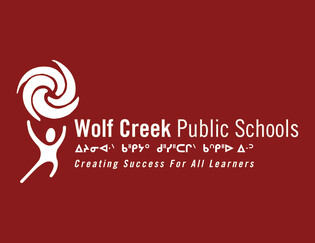Indigenous Education Update Highlights Student Success, Cultural Connection, and Community Engagement

A focus on relationships, community building, cultural connections and academics is leading to successful outcomes for Indigenous students across Wolf Creek Public Schools (WCPS).
Erin Tisdale, Director of Indigenous Education and Reconciliation reported to the WCPS Board of Trustees that the growth has come from a deeper sense of belonging, thanks to targeted programming and relationship-based support.
Tisdale emphasized the foundational role of the Indigenous Student Success Coach program in WCPS’ Ponoka sector schools, which is grounded in the principles of miyo wicehtowin (good relations), mâmawatoskêwin (working together), and pakoseyimowin (hope).
“There are a number of programs in place across Wolf Creek to build close connections with students, families, and community members, while providing meaningful cultural learning and understanding,” said Tisdale. “We are seeing the positive impacts these connections are making every day.”
Success Coaches work closely with students to monitor academic progress, attendance, and family connections. By maintaining detailed monthly tracking sheets and building relationships across school communities, they are able to respond quickly and personally to students’ evolving needs.
The Maskwacis Cree Elder Program and the Wisdom and Guidance Committee continue to be cornerstones of WCPS’s reconciliation efforts.
“Honouring the land means honouring the stories that come from that place,” said Tisdale. “Our Elders bring those stories to life.”
Updates from the Indigenous Education and Reconciliation Team can be found online on WCPS’s webpage.
Meanwhile, two-thirds of WCPS schools have hosted Indigenous community members this year, including Elders, Indigenous Education and Reconciliation Learning Support Coaches, Métis fiddlers, First Nations drummers, and dancers. Parents have also begun volunteering to share cultural knowledge—something staff see as a sign that trust and belonging are being built.
Indigenous students across WCPS are also experiencing measurable growth in academic achievement and a deeper sense of belonging, thanks to targeted programming and relationship-based support.
At Ponoka Secondary Campus, more Indigenous students are on track to graduate than at this time last year. Post-secondary planning is also gaining momentum, with 10 students already accepted to college or university, and two more engaging in online inquiries.
The BRICK Learning Centre also saw improved credit completion and student retention with the majority of students on path to graduate. Ponoka Elementary School has noted increased daily attendance and growing student confidence, especially among students involved in literacy and numeracy support groups.
Tisdale showed provincial data indicating a rise in three-year high school completion rates, improved performance on Grade 6 PATs, and increased transition rates to post-secondary institutions amongst Indigenous students across WCPS. While the numbers tell part of the story, Tisdale stressed the importance of hearing the voices behind them.
“Our systems need to reflect Indigenous worldviews,” she said. “That’s why we need both data and story—to fully honour the holistic experiences of our students.”
